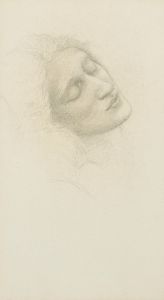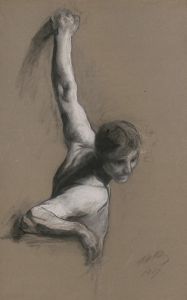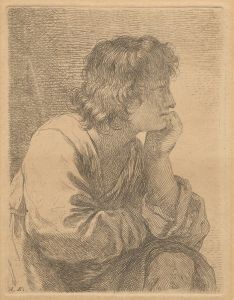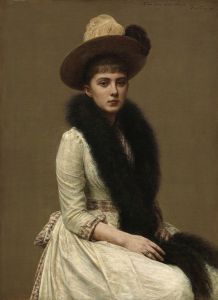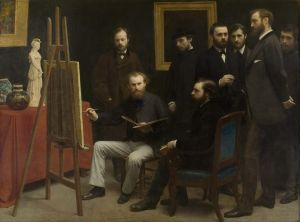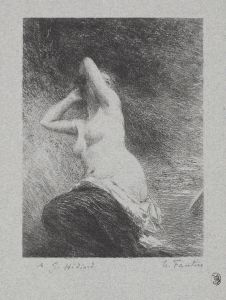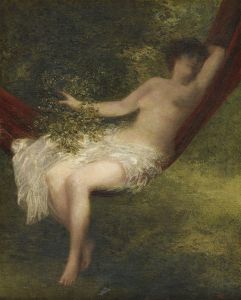
Le poète et la muse
A hand-painted replica of Henri Fantin-Latour’s masterpiece Le poète et la muse, meticulously crafted by professional artists to capture the true essence of the original. Each piece is created with museum-quality canvas and rare mineral pigments, carefully painted by experienced artists with delicate brushstrokes and rich, layered colors to perfectly recreate the texture of the original artwork. Unlike machine-printed reproductions, this hand-painted version brings the painting to life, infused with the artist’s emotions and skill in every stroke. Whether for personal collection or home decoration, it instantly elevates the artistic atmosphere of any space.
Henri Fantin-Latour, a renowned French painter known for his still lifes and group portraits, created the artwork "Le poète et la muse" in 1896. This painting is a notable example of Fantin-Latour's exploration of symbolic and allegorical themes, which he pursued alongside his more traditional works.
"Le poète et la muse" translates to "The Poet and the Muse," a title that suggests a deep engagement with themes of inspiration and creativity. The painting reflects Fantin-Latour's interest in the interplay between the artist and their source of inspiration, a common motif in art and literature. This work is part of a broader tradition in which artists depict the muse as a guiding force or source of divine inspiration for poets and creators.
Fantin-Latour was associated with the Symbolist movement, which sought to express ideas and emotions through symbolic imagery and themes. This movement was a reaction against the naturalism and realism that dominated the art world in the late 19th century. Symbolists often used mythological and dream-like imagery to convey deeper meanings, and "Le poète et la muse" fits within this context by exploring the mystical relationship between the artist and their muse.
The painting itself is characterized by its soft, ethereal quality, a hallmark of Fantin-Latour's style. He often employed a delicate palette and subtle brushwork to create a sense of intimacy and introspection. In "Le poète et la muse," these techniques are used to evoke a dream-like atmosphere, inviting viewers to ponder the nature of artistic inspiration.
Fantin-Latour's work was well-regarded during his lifetime, and he was known for his ability to capture the essence of his subjects, whether in still life, portraiture, or more imaginative compositions like "Le poète et la muse." His paintings often reflect a deep appreciation for music and literature, and he was known to be inspired by the works of composers such as Richard Wagner and writers like Charles Baudelaire.
"Le poète et la muse" is part of Fantin-Latour's later body of work, during a period when he increasingly focused on imaginative and allegorical subjects. This shift in focus allowed him to explore more abstract themes and experiment with different artistic expressions. The painting is a testament to his ability to blend realism with symbolism, creating works that are both visually appealing and intellectually engaging.
Today, Henri Fantin-Latour's paintings are held in high esteem and can be found in major museums and collections worldwide. His contribution to the Symbolist movement and his unique approach to capturing the interplay between reality and imagination continue to be appreciated by art historians and enthusiasts alike. "Le poète et la muse" remains a significant piece within his oeuvre, exemplifying his skill in merging traditional techniques with innovative thematic exploration.






